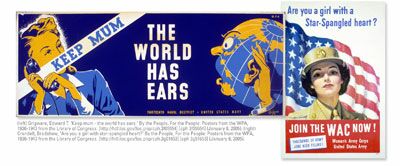What we see has a profound effect on what we do, how we feel, and who we are. Through experience and experimentation, we continually increase our understanding of the visual world and how we are influenced by it. Psychologist Albert Mehrabian demonstrated that 93% of communication is nonverbal. Studies find that the human brain deciphers image elements simultaneously, while language is decoded in a linear, sequential manner taking more time to process. Our minds react differently to visual stimuli.
Relatively speaking, in terms of communication, textual ubiquity is brand new. Thanks to millions of years of evolution, we are genetically wired to respond differently to visuals than text. For example, humans have an innate fondness for images of wide, open landscapes, which evoke an instant sense of well-being and contentment. Psychologists hypothesize that this almost universal response stems from the years our ancestors spent on the savannas in Africa.
People think using pictures. John Berger, media theorist, writes in his book Ways of Seeing (Penguin Books, 1972), "Seeing comes before words. The child looks and recognizes before it can speak." Dr. Lynell Burmark, Ph.D. Associate at the Thornburg Center for Professional Development and writer of several books and papers on visual literacy, said, "...unless our words, concepts, ideas are hooked onto an image, they will go in one ear, sail through the brain, and go out the other ear. Words are processed by our short-term memory where we can only retain about 7 bits of information (plus or minus 2). This is why, by the way, that we have 7-digit phone numbers. Images, on the other hand, go directly into long-term memory where they are indelibly etched." Therefore, it is not surprising that it is much easier to show a circle than describe it.
When it comes to quick, clear communication, visuals trump text almost every time. Presented with the following textual and visual information, would you pet this dog?

The very same visual elements that we are indelibly drawn to and so quickly absorb not only communicate data more efficiently and effectively but also affect us emotionally. For instance, research shows that exposure to the color red can heighten our pulse and breathing rates. What is your reaction to the following picture?

How do you feel when you look at this picture? How quickly did you feel that way? Can you see how this image could be used to quickly elicit a strong emotional response and influence the viewer? If I were to textually describe this picture, your emotional reaction would not be as strong and it would take more time to digest the information. J. Francis Davis, an adult educator and media education specialist, captured it well when he said, "...in our culture pictures have become tools used to elicit specific and planned emotional reactions in the people who see them." Visuals are not only excellent communicators but also quickly affect us psychologically and physiologically.
Don Norman, author of Emotional Design, said in a Discover magazine article, "Beauty and the Beastly PC: The Graphics on Your Computer Screen Can Affect the Way You Feel—and Think,"
"I started out as an engineer, and I thought that what was really important was that something worked. Appearance—how could that matter? And yet for some reason, I would still buy attractive things, even if they didn't work as well as the less attractive ones. This puzzled me. In the last two years, I've finally come to understand that it's a result of the extremely tight coupling between emotion and cognition. Emotion is about judging the world, and cognition is about understanding. They can't be separated."
How many times have you heard, "I didn't believe it until I saw it." Studies show that the old saying "seeing is believing" is mostly true. Of course, we know that what we see can be manipulated but the point is that visuals are persuasive. The Stanford Persuasive Technology Lab asked 2,440 participants how they evaluated the credibility of Web sites they were shown. Almost half (46.1%) said that the Web site's design look was the number one criterion for discerning the credibility of the presented material. The following are some of the captured participant comments:
"This site is more credible. I find it to be much more professional looking." -M, 38, Washington
"More pleasing graphics, higher-quality look and feel ..." -F, 52, Tennessee
"Just looks more credible." -M, 24, New Jersey
"I know this is superficial, but the first thing that struck me is the color difference. The ... site is a soothing green (sort of like money) while the [other] site is a jarring purple." -M, 56, Virginia
The ability of visual stimuli to communicate and influence is undeniable and inescapable. Through evolution, human beings are compelled to view and disseminate visuals. Recognizing the importance of visual communication is key to your success. Allen Ginsberg, poet and author, stated, "Whoever controls the media—the images—controls the culture." As early as the late nineteenth century, advertisers, based on their collective experience, were convinced that illustrations sold goods. World War II propaganda posters were very effective at manipulating popular opinion.

The Sunday New York Times published, "Good as a Gun: When Cameras Define a War," an article that effectively dealt with how the images photojournalists capture have influenced world affairs. Despite the best efforts of politicians, commanders, generals, and others involved with the war efforts, it was imagery that became the catalyst for some of the most pronounced changes. Reading or hearing about a situation is very different from seeing it.
In 1986, a 3M-sponsored study at the University of Minnesota School of Management found that presenters who use visual aids are 43% more effective in persuading audience members to take a desired course of action than presenters who don't use visuals. The goal of the experiment was to persuade undergraduates to commit their time and money to attending time management seminars. Presenters of various skill levels participated. Researchers found that average presenters who used visual aids were as effective as more advanced presenters using no visuals. In addition, the study found that the audience expected the advanced presenters to include professional, quality visuals. What about you? Have you noticed the increase in visual aids during presentations? Do you prefer presentations with or without visuals?
Human communication has existed for about 30,000 years. In the beginning of recorded history, the vast majority of what we communicated was not text based. Textual communication has been with us in one form or another for only 3,700 years. With the invention of tools like Gutenberg's movable type printing press in 1450, text took center stage. Graphics were too costly to include. As printing costs dropped graphics soon resurfaced and their frequency is rising. In 1995, Charles Brumback, the chairman of the Newspaper Association of America, said, "as newspaper penetration falls ... the culture itself moves from textual to visual literacy." Gunther Kress is a Professor of English and Education at the School of Education, University of London. His research confirms this change over. As an example, Kress compares science textbooks from 1936 and 1988 showing that textbooks have progressed from a majority of text to a majority of graphics.
The change isn't limited to textbooks and newspapers. Signs, maps, instructions, schematics, icons, symbols, and packaging sell products, warn of possible hazards, and give visual direction when words alone are not sufficient. Graphics are found on Web sites, TV shows, appliances, and computers; in vehicles and books; and at museums, malls, restaurants, and grocery stores. More and more professions that rely heavily on communication and persuasion are embracing graphics as a tool of choice. In the Boston Globe article, "Courtroom Graphics Come of Cyber-Age," author Sacha Pfeiffer found that "... new technologies—and a new willingness in legal circles to embrace them—have taken the use of visual images in the courtroom to a level unimaginable even a decade ago ... The result is a slow but significant shift in the way many trial lawyers, who historically have relied largely on their verbal skills to sway juries, try cases ... More prosecutors see high-tech graphics not as a luxury, but as a necessity."
Graphic communication is more ubiquitous than ever before. Why? Because graphics do what text alone cannot do. They quickly affect us both cognitively and emotionally:
1) Cognitively: Graphics expedite and increase our level of communication. They increase comprehension, recollection, and retention. Visual clues help us decode text and attract attention to information or direct attention increasing the likelihood that the audience will remember.
2) Emotionally: Pictures enhance or affect emotions and attitudes. Graphics engage our imagination and heighten our creative thinking by stimulating other areas of our brain (which in turn leads to a more profound and accurate understanding of the presented material). It is no secret that emotions influence decision-making:
"(Emotions) play an essential role in decision making, perception, learning, and more ... they influence the very mechanisms of rational thinking."
Behavioral Psychologists agree that most of our decisions are based on intuitive judgment and emotions. Herbert A. Simon, Nobel Prize winning scholar at the Carnegie Mellon Institute in Pittsburgh, studied corporate decision-making and found that people often ignored formal decision-making models because of time constraints, incomplete information, the inability to calculate consequences, and other variables. Intuitive judgment was the process for most decisions. Neurologist Antonio Damasio studied research on patients with damaged ventromedial frontal cortices of the brain, which impaired their ability to feel but left their ability to think analytically intact. Damasio discovered that the patients were unable to make rational decisions even though their ability to reason was fully functional. He concluded that reasoning "depends, to a considerable extent, on a continual ability to experience feelings."
Psychologists Amos Twersky and Nobel Prize winner Daniel Kahnerman demonstrated that decision-making also depended on how the problems were framed or described, which results in predictable cognitive patterns and errors in judgment. Consider the following example:
"A bat and a ball cost $1.10 in total. The bat costs $1 more than the ball. How much does the ball cost?"
The question is asked in a way that clouds the correct answer. If the question were worded as follows:
A bat and a ball cost $1.10 in total. The bat cost $1.05. How much does the ball cost?
The answer would be obvious: 5 cents. Much as phraseology influences the response to a question, how and what you show influences the audience's response.
So visuals are processed 60,000 times faster than text, graphics quickly affect our emotions, and our emotions greatly affect our decision-making. If most of our decisions are based on relatively quick intuitional judgment and emotions, then how many decisions are influenced by visually appealing, easily digested graphics? The answer is no secret to advertisers.
Billions of dollars are spent annually to find the right imagery to sell a product, service, or idea. The United States Military spent $598 million in 2003 on advertising to increase "brand identity" and meet their annual recruitment goals. Nike spent $269 million in 2001 on its image to sell their products. Anheuser-Busch spent $440 million to promote its products in 2001. Pepsi budgeted over $1 billion in 2001 on its image. Not to be out done, Coca-Cola budgeted $1.4 billion for its image in the same year. Graphics help create "brand identity." Visuals paint the picture of who the advertiser is, what they stand for, and how the audience may benefit. Graphics sell because of their ability to influence. How you use graphics greatly affect how you and your business are perceived.
Study after study, experiment after experiment has proven that graphics have immense influence over the audience's perception of the subject matter and, by association, the presenter (the person, place, or thing most associated with the graphic) because of these neurological and evolutionary factors. The audience's understanding of the presented material, opinion of the presented material and the presenter, and their emotional state are crucial factors in any decision they will make. Without a doubt, graphics greatly
influence an audience's decisions. Whoever properly wields this intelligence has a powerful advantage over their competition.
Larry Tracy, who now trains corporate executives to make oral presentations for government contracts, headed the Pentagon's top briefing team and worked for years with the Department of State. He was aware that graphics were so influential in the government's decision to purchase goods and services that bad buying decisions were made based on the quality of the visuals in the presented materials. This has in turn led to the government, at times, putting constraints on presented graphics by requiring black and white submissions, or even requiring that no graphics be used in a presentation in order to reduce the likelihood of high-quality, polished graphics unfairly persuading evaluators.
I spent many years analyzing how the proposal industry works (an industry that focuses on the submission of written and oral presentations to secure work that will increase or maintain a company's revenue). I found that the priority of graphic development increases as award value rises. The industry understands the influence that graphics have on their audience. It is common knowledge to companies like Northrop Grumman, Raytheon, Boeing, and Lockheed Martin that graphics are an essential part of winning new government business. In fact, it is not uncommon, when exceptional graphics are used, for government evaluators to commend the presenter on their use of graphics.
Flags, eagles, and other symbols of patriotism are often included on proposal covers simply because of the positive emotional influence patriotic imagery has on government evaluators. Part of the cover's goal is to instantly establish that the presenter is a supportive, trustworthy, reliable patriot. As a result, the government evaluator is more likely to be in a positive, agreeable state of mind when reading the proposal. As stated earlier, emotions influence the very mechanisms of rational thinking, so if the evaluator's mood is elevated by the visuals, the more likely he or she is to agree with the presenter.
I am not saying that graphic communication is better than text. The combination of graphics and words has a communicative power that neither singularly possesses.
"Pictures interact with text to produce levels of comprehension and memory that can exceed what is produced by text alone."
Without graphics, an idea may be lost in a sea of words. Without words, a graphic may be lost to ambiguity. Robert E. Horn, an award-winning scholar at Stanford University's Center for the Study of Language and Information, said, "When words and visual elements are closely entwined, we create something new and we augment our communal intelligence ... visual language has the potential for increasing ‘human bandwidth'—the capacity to take in, comprehend, and more efficiently synthesize large amounts of new information."

